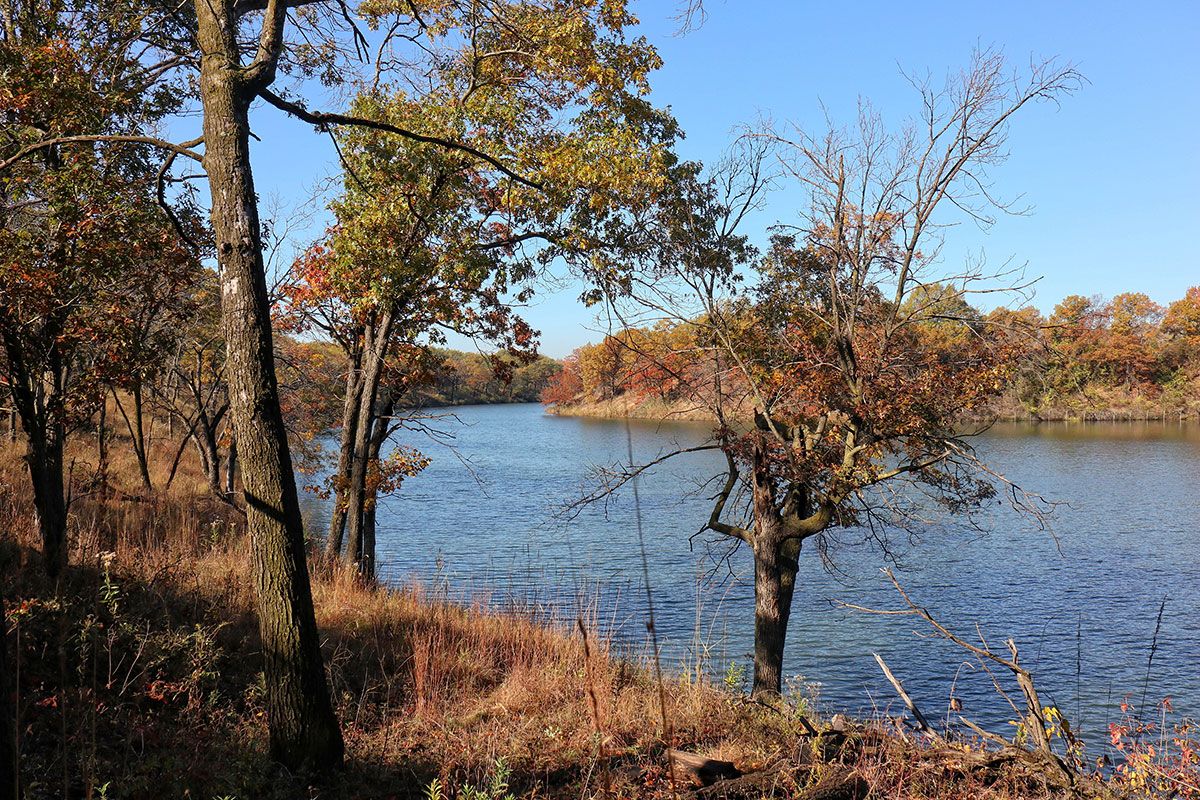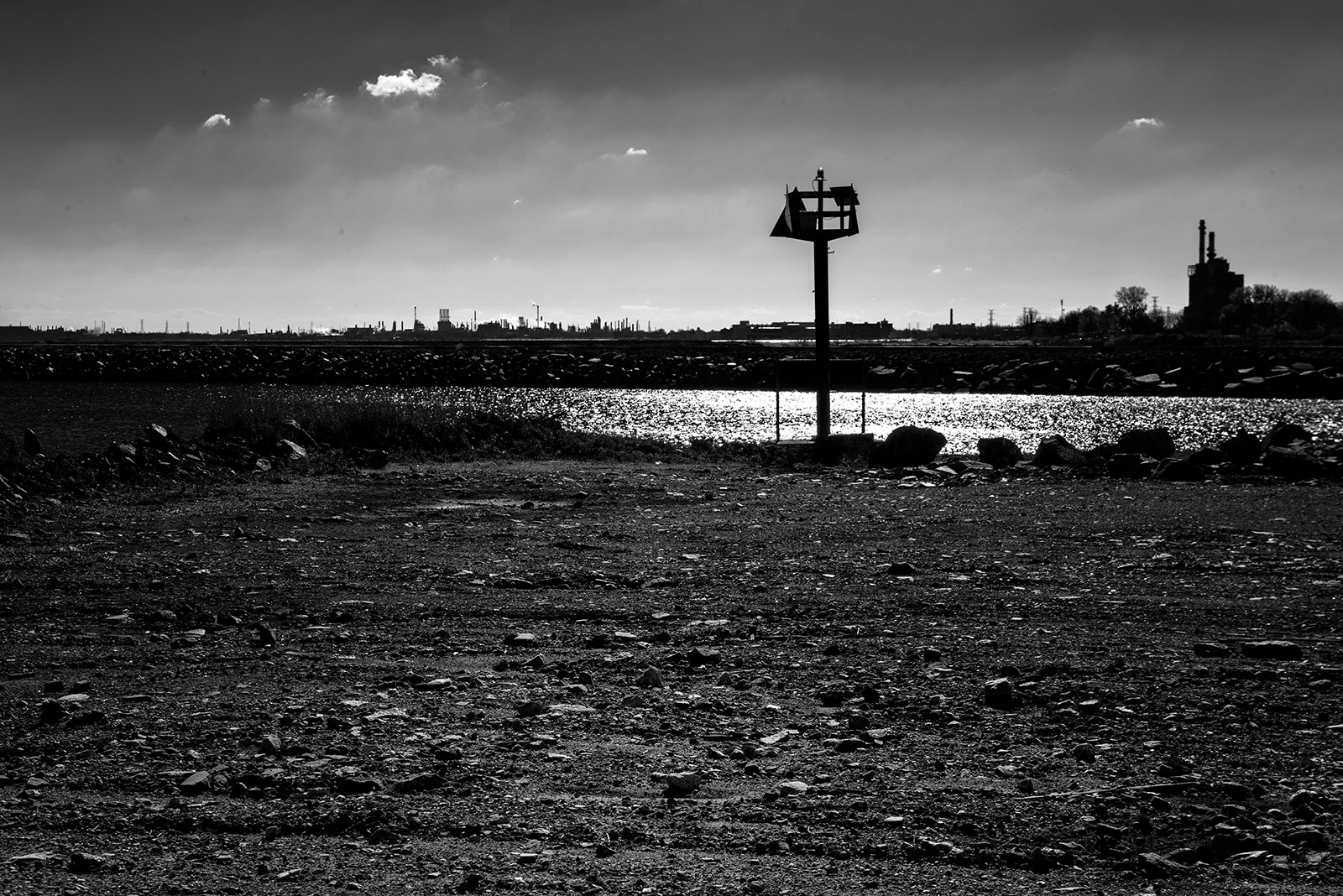The Great Calumet Industrial Region spreads across the South Side of Chicago, stretching along Lake Michigan and into southern Cook County and northwest Indiana. The region has long been considered one of the most heavily industrialized areas of the country, and today it is home to more than 1,500 companies in the industrial and manufacturing sectors, including steel mills, chemical plants, and oil refineries, according to the Calumet Area Industrial Commission.
Prior to the 1972 Clean Water Act (CWA), the significant amount of waste and pollution created by these booming industries was drained into the Grand Calumet River. The CWA established a basic structure for regulating pollution and water quality standards for all U.S. waterways, making it illegal for industries to release pollutants into “navigable waters, unless a permit was obtained,” according to the U.S. Environmental Protection Agency (EPA). (Permits are granted to parties who can “ensure that the discharge does not hurt water quality or people’s health,” per the EPA.)
The 1972 CWA was the first major U.S. law to address water pollution, but in the case of the Calumet River, the damage had been done. The river originates on the east side of Gary, Indiana, with the eastern branch flowing directly into Lake Michigan. It was designated an Area of Concern (AOC) in 1987 due to “legacy pollutants,” according to the EPA. These pollutants (which include PCBs; PAHs; heavy metals like mercury, cadmium, chromium and lead; and oil and grease) were found in the sediment at the bottom of the river, meaning the industrial waste that had collected, unregulated, in the time between the area’s industrial boom and the enactment of the CWA had remained in the environment, almost two decades after these types of polluting practices were banned.
The state of the Grand Calumet River is such that it has been granted Beneficial Use Impairments (BUIs) by the International Joint Commission (IJC) — an organization created by the U.S. and Canada to protect their waterways for future generations. The IJC’s 14 BUIs are designations that identify “some of the most severe examples of environmental degradation,” per the EPA, but they are not permanent. A BUI can be removed after cleanup efforts prove sufficient improvement in environmental health. Only two BUIs have been removed from the Calumet River so far: “Restrictions on Drinking Water Consumption or Taste and Odor Problems” and “Added Costs to Agriculture or Industry.”
The remaining 12 BUIs recognize water quality issues related to harmful effects on fish and wildlife, recreational effects like beach closings, “degradation of aesthetics” and similar. According to the EPA, cleanup efforts began in 2010 and are still underway. These efforts include sediment remediation and habitat restoration projects, and once the remaining 12 BUIs have been removed, the EPA and the state of Indiana can begin the process of delisting it as an AOC. “Restoration and cleanup at this AOC will improve one of the most heavily polluted areas in the Great Lakes watershed and allow the surrounding communities to benefit more fully from the river and surrounding ecosystems,” says the EPA’s website.
Of course, the Grand Calumet River and surrounding region hasn’t always looked like this. About 120 years ago, it was a swampy, sandy wilderness. Then, in 1889, the Standard Oil Company moved in, closely followed by the behemoth that was the United States Steel Corporation. A 1939 historical guide about the region explains that oil refining and steel manufacturing were considered “nuisance industries,” and this area was chosen for its remoteness, as it would allow these companies to operate “without offense to the inhabitants of Chicago.” Typical of the time, this is the book’s only reference to any negative effects of these types of industries.
Not much clarity is offered regarding what part of oil refining was found “offensive,” and is described, at most, as a problem of aesthetics. Offensive smells and great clouds of black smoke, sure, but what of the negative health effects? In 1905, Gary, Indiana, recorded a population of 19,000, but that number had grown to 260,000 by 1939, according to the historical guide. Most of the pollutants listed above — those found in the river sediment in 1987 — are considered carcinogenic by the American Cancer Society, meaning the droves of blue-collar workers who moved their families to accommodate the influx of jobs from the industrial boom were at risk of exposing themselves to carcinogens and contracting illness and disease, like cancer.
Today, Gary records a population of around 68,000 — a decline that began in the 1970s as a result of worker layoffs brought on by reduced steel demand, technological advancements in the industry and an increase in foreign competition. The city is now a shell of its former bustling self, barely recognizable to the Chicago daytrippers taking I-90 across the Calumet River toward popular tourist destinations like the Indiana Dunes State Park or New Buffalo, Michigan.

But along with efforts to clean up the Calumet River and surrounding area, lawmakers hope to also restore the city of Gary into a place worth visiting. In February 2022, the Chicago Tribune reported that federal money had been allocated toward cleaning up the Grand Calumet River for “reversing the legacy left by decades of industrial pollution” and that “a clean environment tied to clean air and water puts the region in its best position to grow.” Part of a $1 billion federal package aimed at cleaning and restoring the Great Lakes, the river is included in this EPA-lead effort as it empties into Lake Michigan. U.S. Representative Frank Mrvan is quoted as saying, “We are in a position to create investment, jobs and allow our neighbors and friends to recreate on a beautiful clean river.” In addition to the Calumet River, the federal package includes funding for 10 other AOCs around the Great Lakes.
About 20 miles east of Gary you’ll find the natural spectacle of the Indiana Dunes. This national park is known for its mammoth sand dunes along Lake Michigan’s sunny shoreline — it’s a beautiful place to spend a summer afternoon with friends. And if federal money continues to support cleanup efforts along the Grand Calumet River, the natural beauty of the Calumet region will continue to be enjoyed by future generations of midwesterners.







